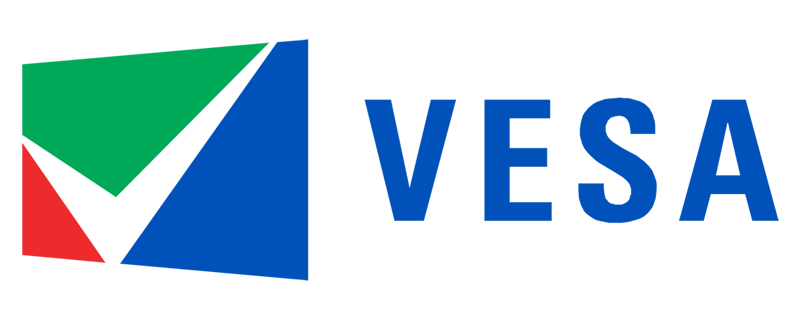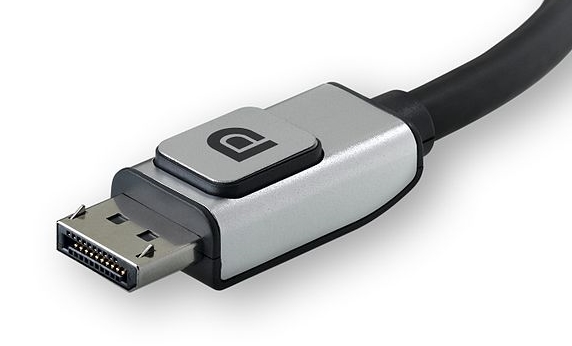VESA starts work on next-gen DisplayPort Standard
VESA starts work on next-gen DisplayPort Standard
Right now VESA has stated that they have certified over 20 devices with support for HBR3 (High Bit Rate 3), which means that we should see DisplayPort 1.3 and 1.4 devices in the near future. Displayport 1.4 will allow high resolution and higher refresh rate displays to be released, allowing 8K 60FPS displays to be used with a single cable and even 4K 144Hz HDR displays to be shipped. These certified devices are likely to be shown at CES next week.Â
With DisplayPort 1.4 already supporting 8K 60Hz displays, many will wonder why VESA is marching forward to create a higher bandwidth DisplayPort standard, though the reasoning is simple, future hardware. Hardware vendors will endeavour to develop higher resolution displays and emerging technologies like VR and AR will require insane amounts of bandwidth to drive greater resolutions or refresh rates. DisplayPort 1.4 is enough for 8K 60Hz, but that won’t be enough for long.Â
On another thing to mention is the development of HDMI 2.1, a new standard that has surpassed DisplayPort 1.4 in several aspects. While DisplayPort 1.4 will undoubtedly hit the market first, HDMI 2.1 offers more than enough features to make it seem like the most appealing display transmission solution. HDMI 2.1 delivers a new Low Latency mode, a Variable Refresh Rate (VRR) component and support for Display Stream Compression technology (the feature that defined the DisplayPort 1.4 standard), giving VESA more than enough motivation to drive DisplayPort forward.Â
 Â
This CES is likely to be filled with 8K displays, high refresh rate 4K monitors and potentially some new VR products. For any of these technologies to move forward, they need a robust display interface, capable of supplying the required bandwidth to meet the requirements of future applications.Â
You can join the discussion on VESA’s work on a next-generation DisplayPort iteration on the OC3D Forums. Â
VESA starts work on next-gen DisplayPort Standard
Right now VESA has stated that they have certified over 20 devices with support for HBR3 (High Bit Rate 3), which means that we should see DisplayPort 1.3 and 1.4 devices in the near future. Displayport 1.4 will allow high resolution and higher refresh rate displays to be released, allowing 8K 60FPS displays to be used with a single cable and even 4K 144Hz HDR displays to be shipped. These certified devices are likely to be shown at CES next week.Â
With DisplayPort 1.4 already supporting 8K 60Hz displays, many will wonder why VESA is marching forward to create a higher bandwidth DisplayPort standard, though the reasoning is simple, future hardware. Hardware vendors will endeavour to develop higher resolution displays and emerging technologies like VR and AR will require insane amounts of bandwidth to drive greater resolutions or refresh rates. DisplayPort 1.4 is enough for 8K 60Hz, but that won’t be enough for long.Â
On another thing to mention is the development of HDMI 2.1, a new standard that has surpassed DisplayPort 1.4 in several aspects. While DisplayPort 1.4 will undoubtedly hit the market first, HDMI 2.1 offers more than enough features to make it seem like the most appealing display transmission solution. HDMI 2.1 delivers a new Low Latency mode, a Variable Refresh Rate (VRR) component and support for Display Stream Compression technology (the feature that defined the DisplayPort 1.4 standard), giving VESA more than enough motivation to drive DisplayPort forward.Â
 Â
This CES is likely to be filled with 8K displays, high refresh rate 4K monitors and potentially some new VR products. For any of these technologies to move forward, they need a robust display interface, capable of supplying the required bandwidth to meet the requirements of future applications.Â
You can join the discussion on VESA’s work on a next-generation DisplayPort iteration on the OC3D Forums. Â




